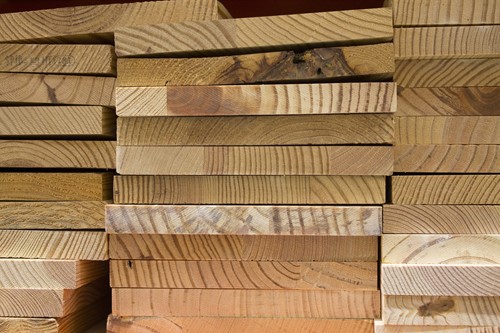
Many homeowners choose pressure-treated pine to build decks based on its price and longevity. While the material ranks as the undisputed go-to lumber for decks and patios, it may not be a perfect fit for every homeowner. That's largely because pressure-treated pine brings a few negatives to the table.
Originally, pressure-treated lumber used to contain a tiny amount of arsenic added to deter insects such as carpenter ants and termites. More modern decking material no longer contains arsenic but may include a mix of chromium, copper, and other chemicals. Using pressure-treated pine means coming into contact with chemicals.
Beyond health and wellness concerns, pressure-treated material can be subpar in appearance. The boards often arrive moist and have a tendency to shrink during the drying process, which leaves inconsistent spacing between planks. The damp lumber takes months to dry, and that aspect postpones a homeowner's ability to stain or paint a deck and patio. It's not uncommon for many people to embrace the graying deck rather than wait it out.
Those are reasons property owners looking to invest in an attractive deck or patio may want to consider alternatives to pressure-treated lumber. The following options can help you build an aesthetically pleasing and long-lasting outdoor asset.
Decks and patios remain a key element to the peaceful enjoyment of your property. Homeowners who invest in decks and patios typically earn a huge return in terms of resale value. Selecting high-quality and luxury materials can also make your property increasingly attractive. That's why it may be worthwhile to explore alternatives to common pressure-treated pine.

Meeting your real estate needs is my highest priority! Everything you need to know about buying or selling a home can be found here on my Website! As a real estate professional, I am dedicated to providing the finest service available.